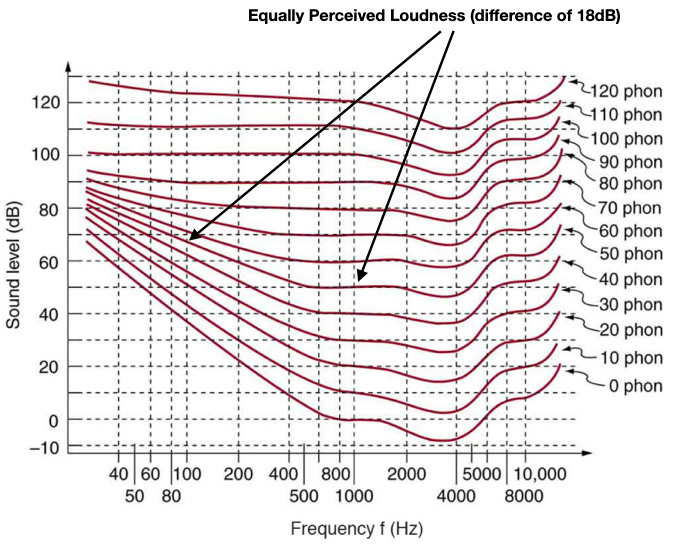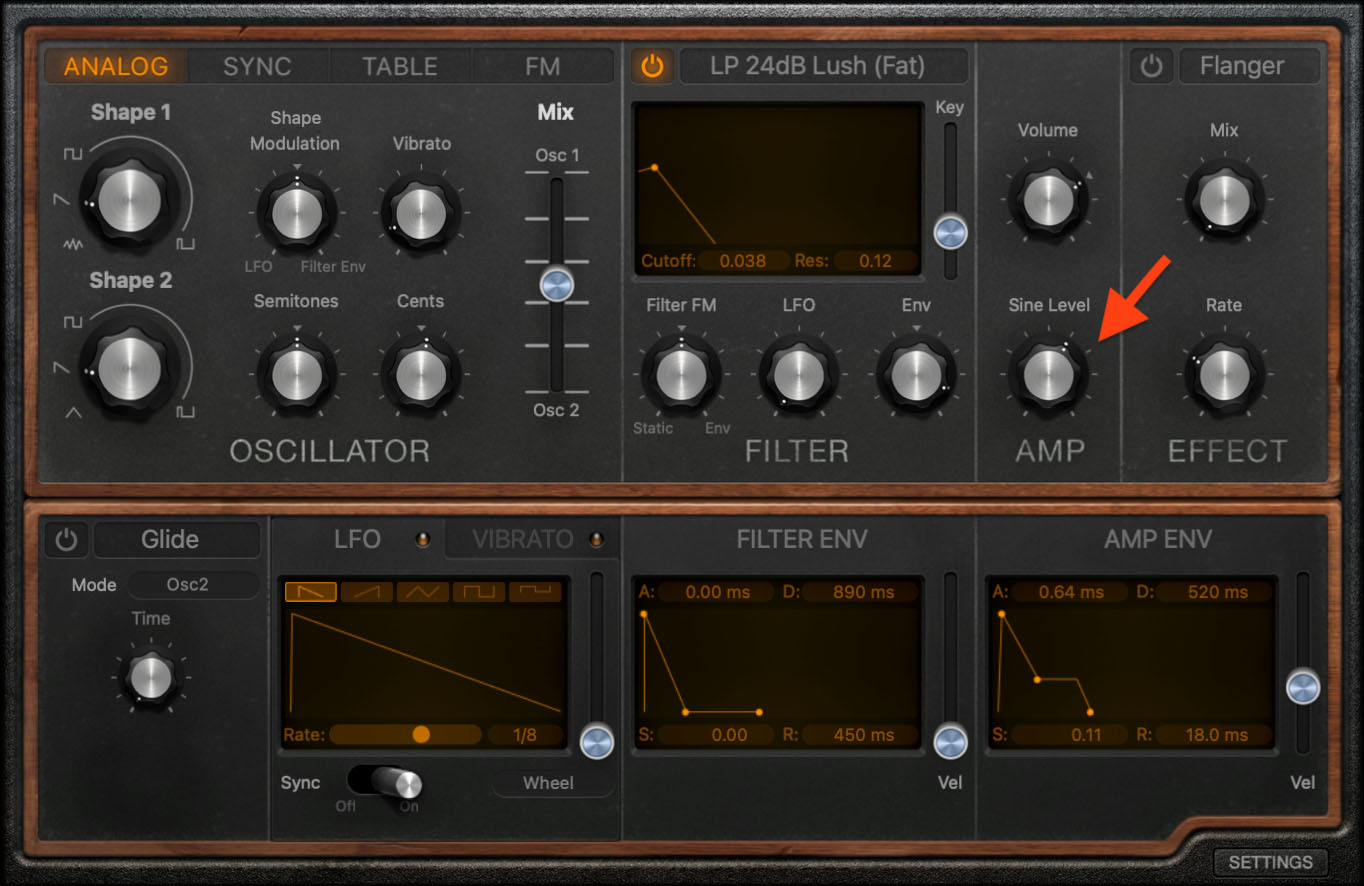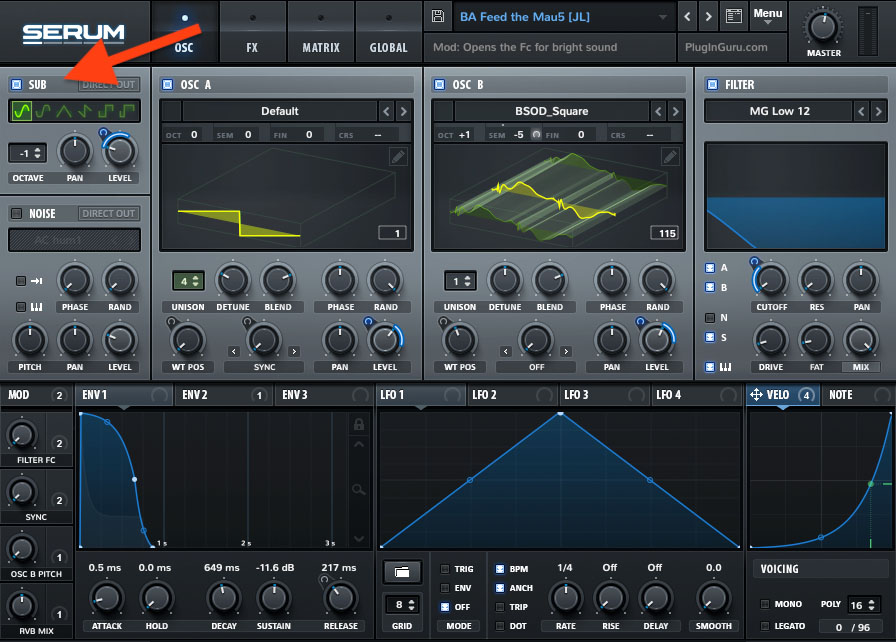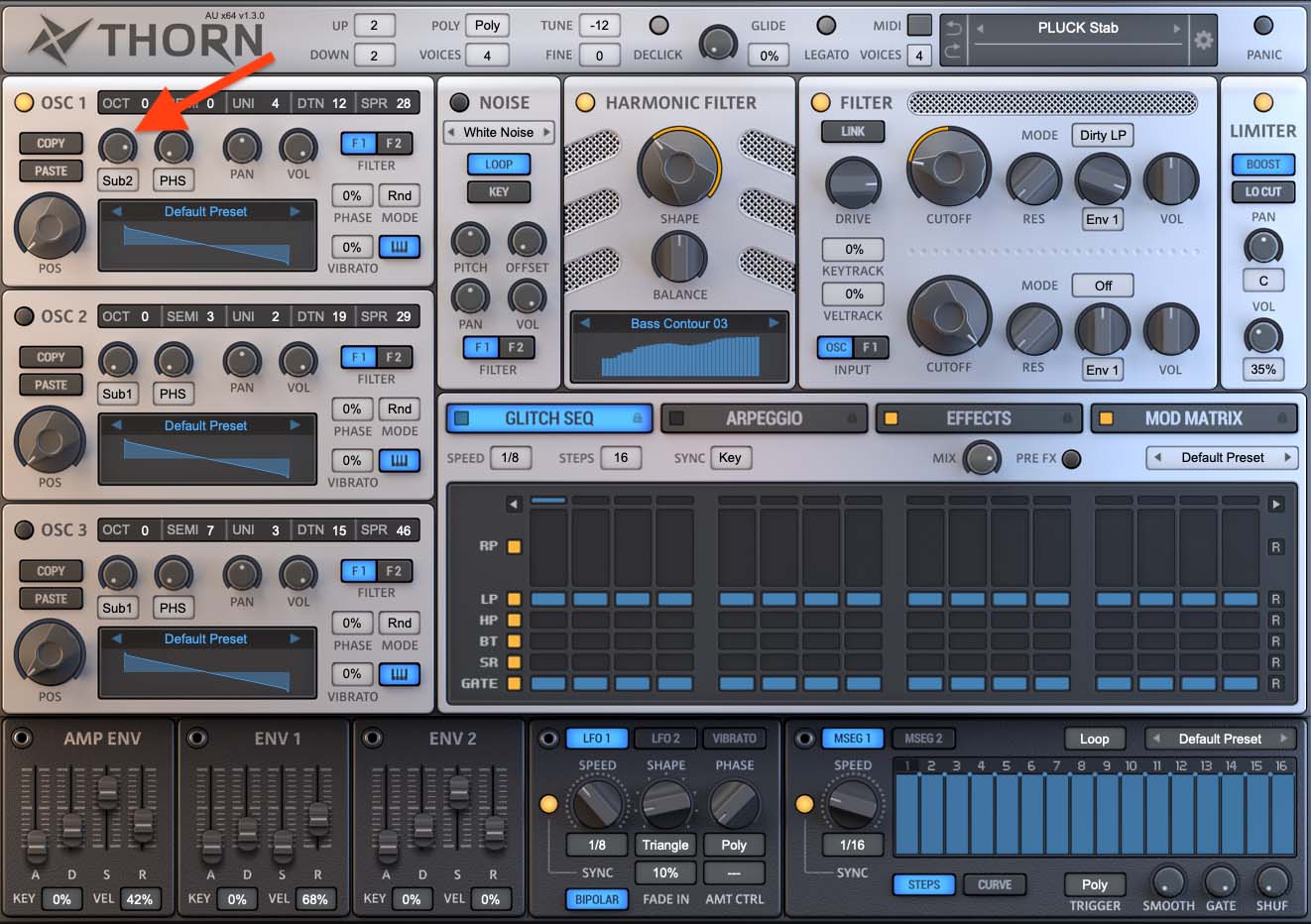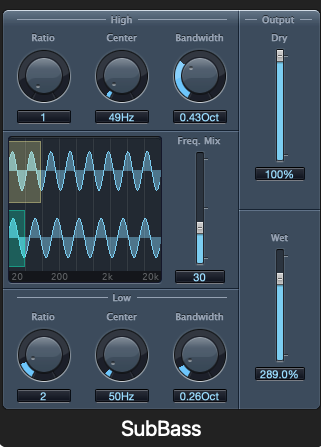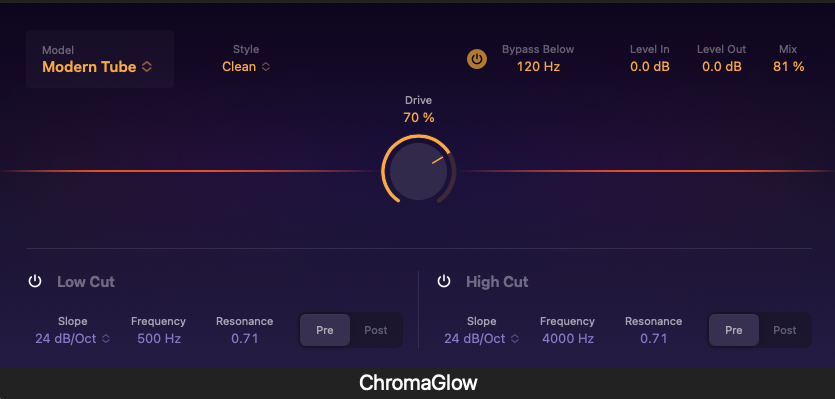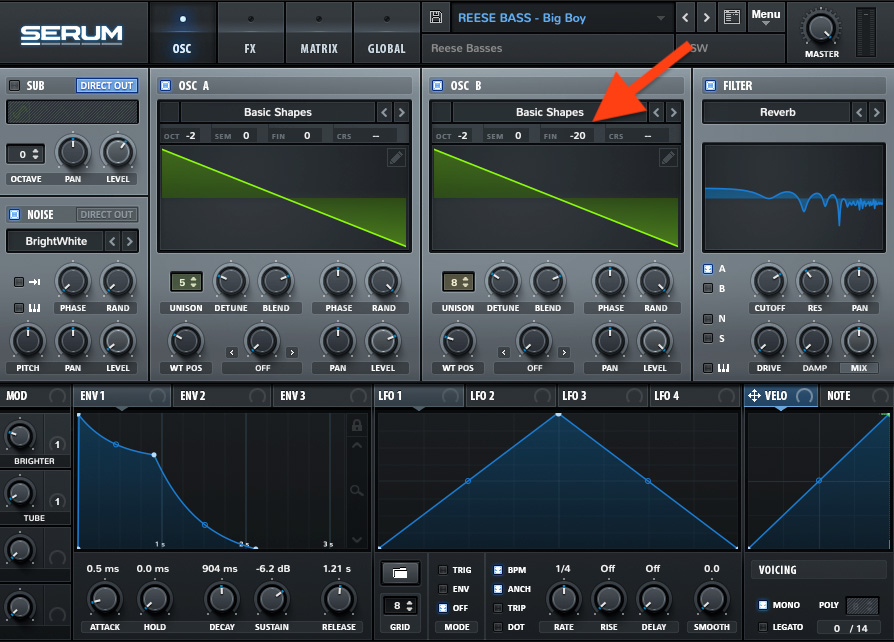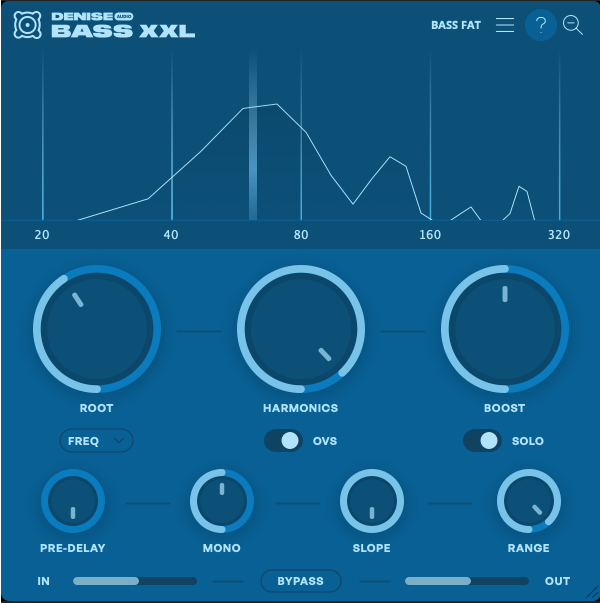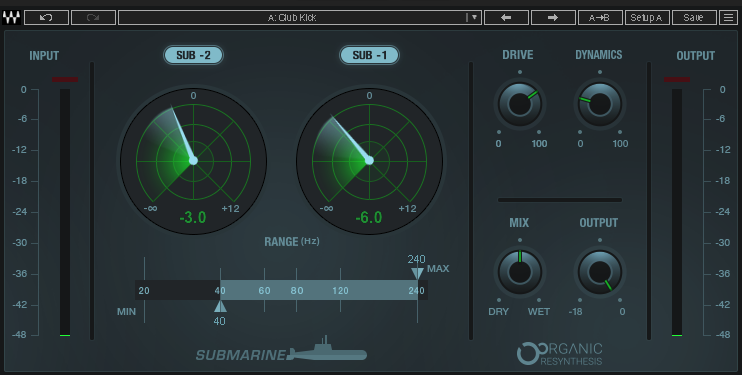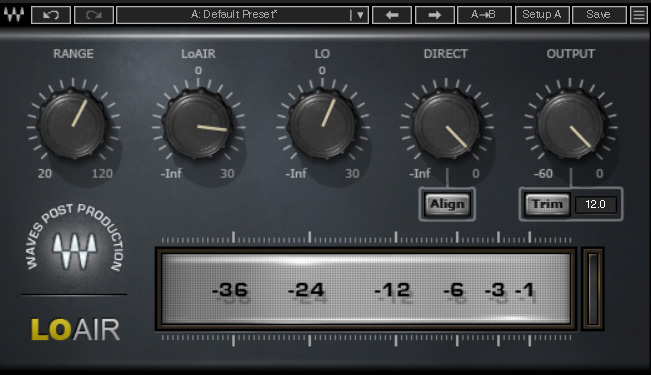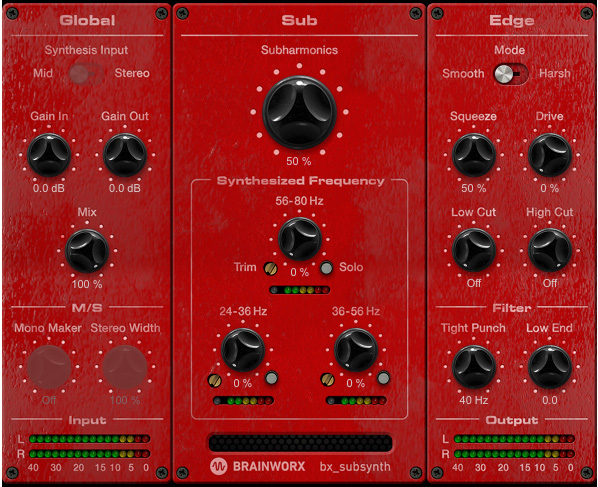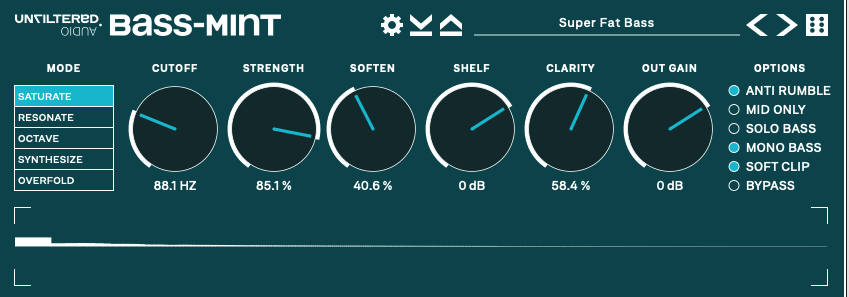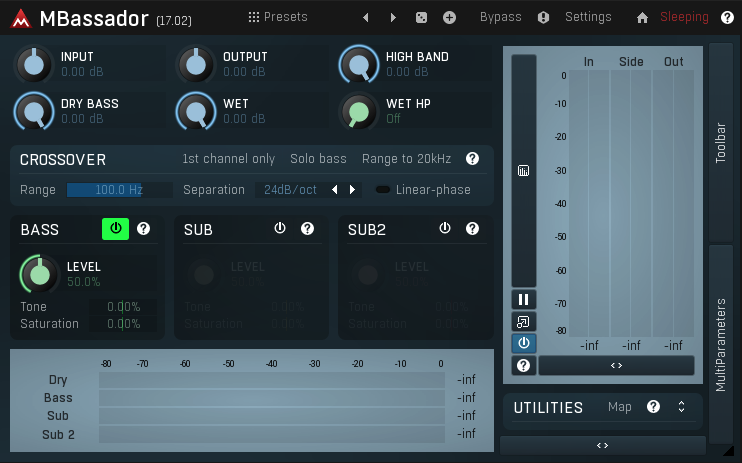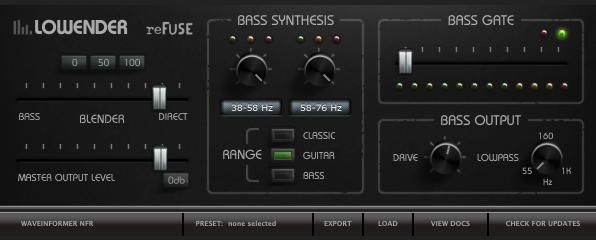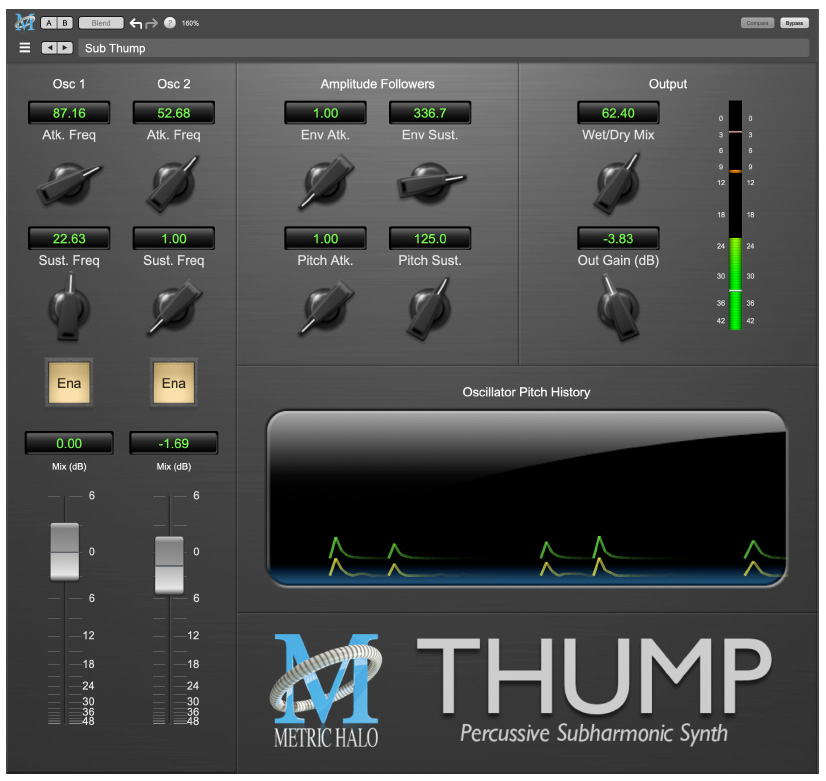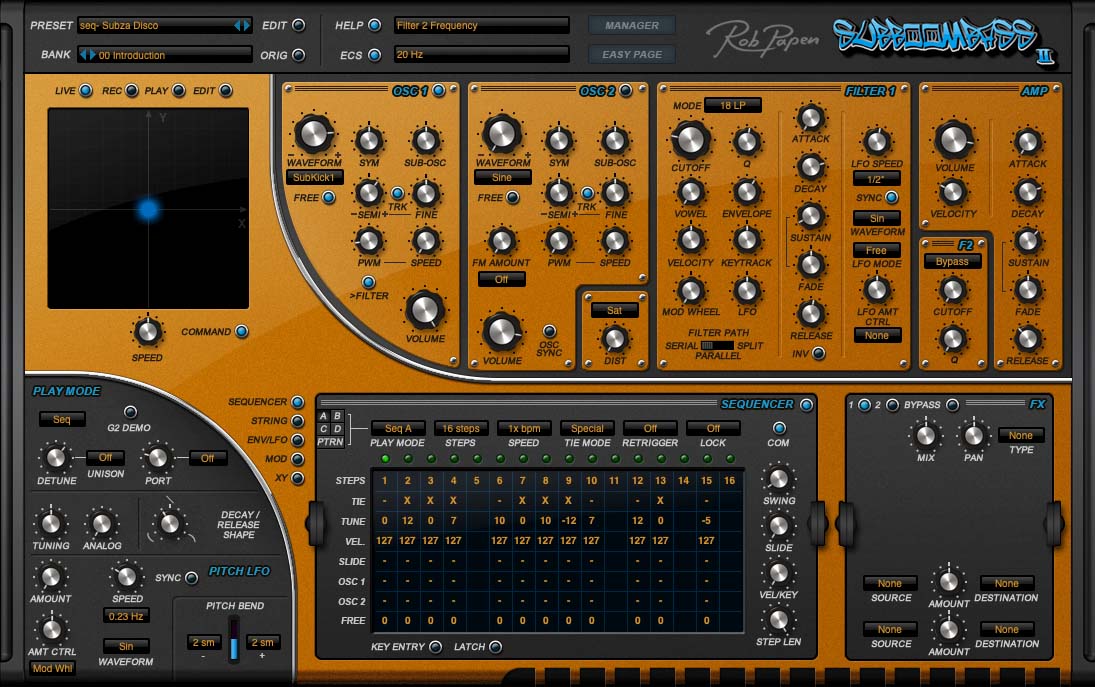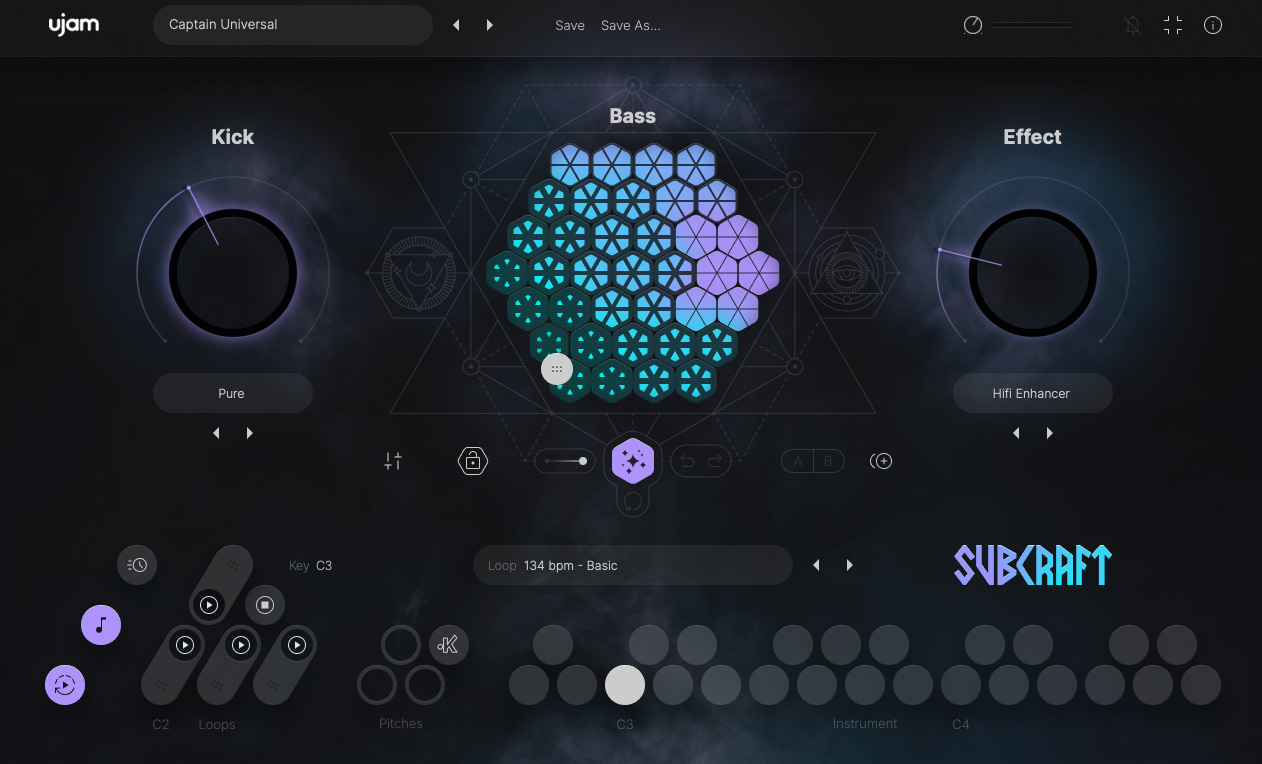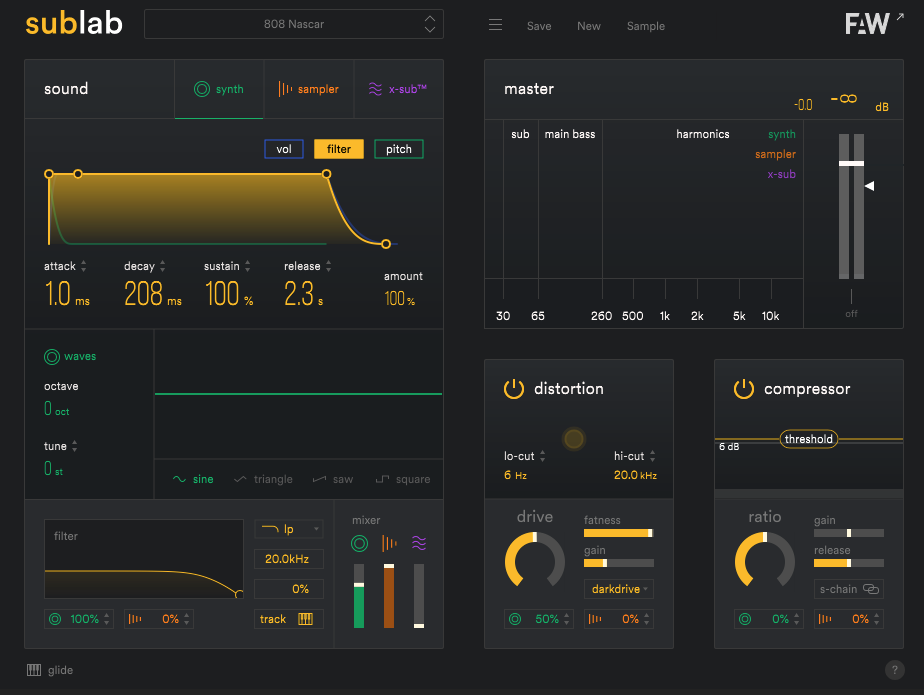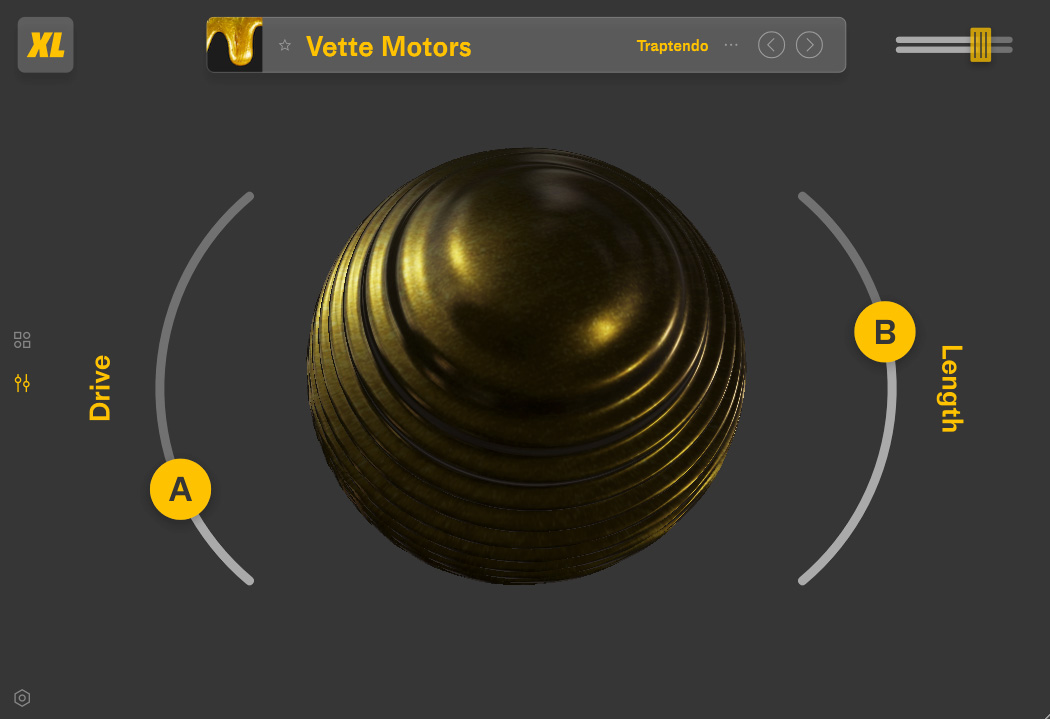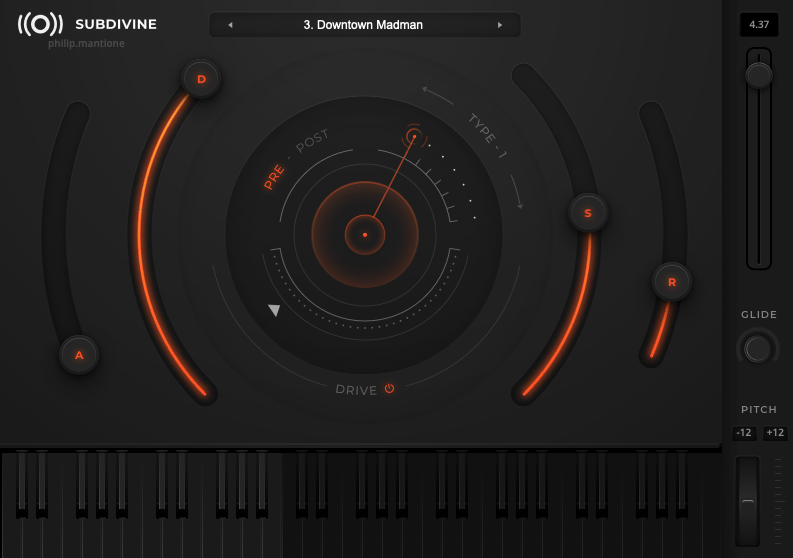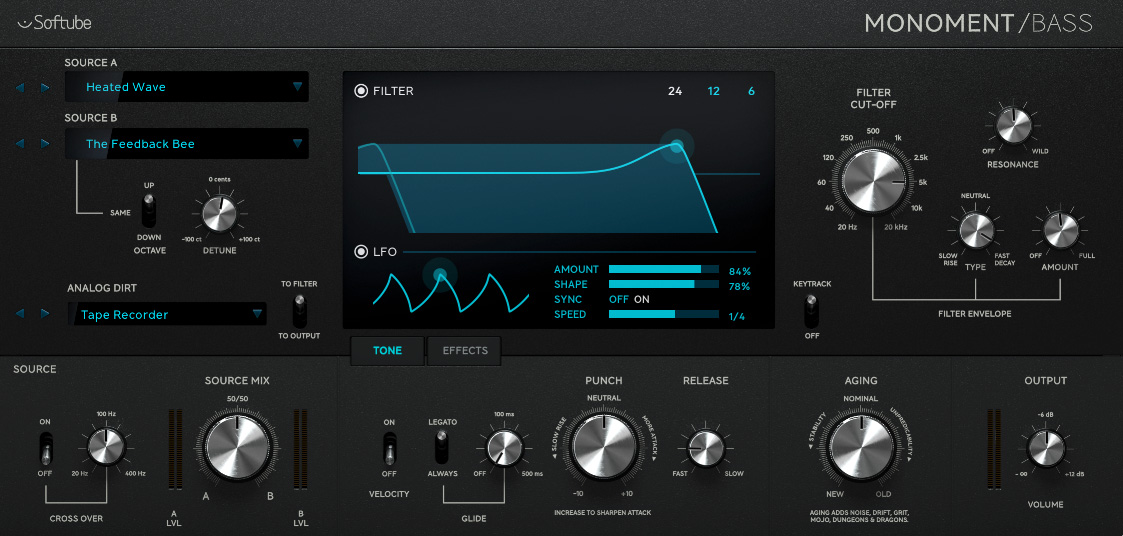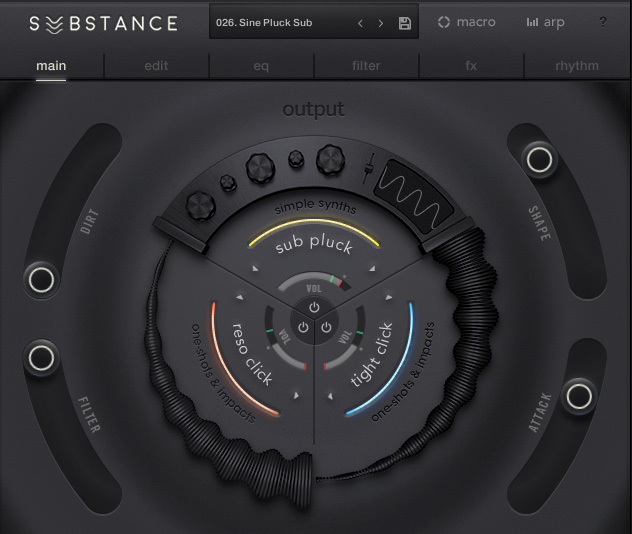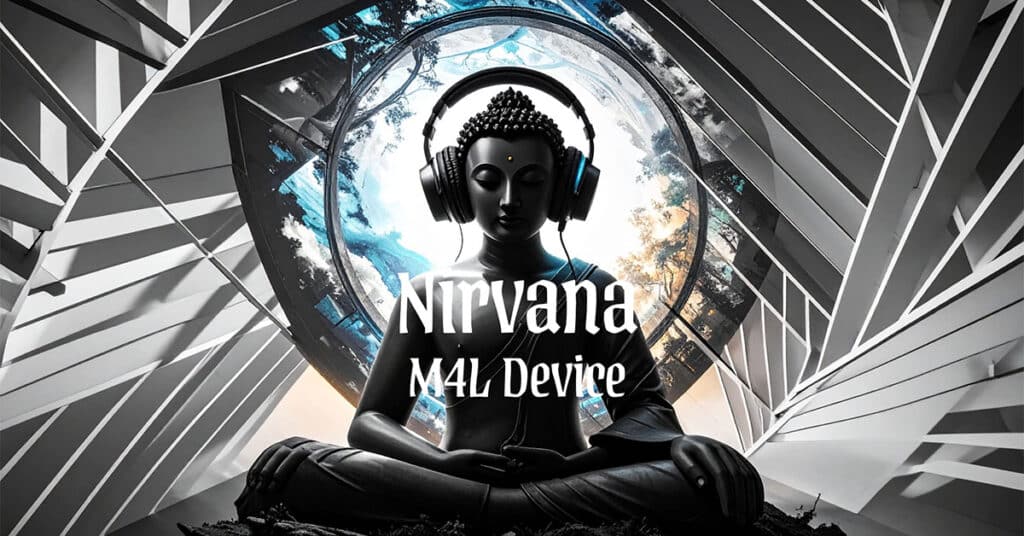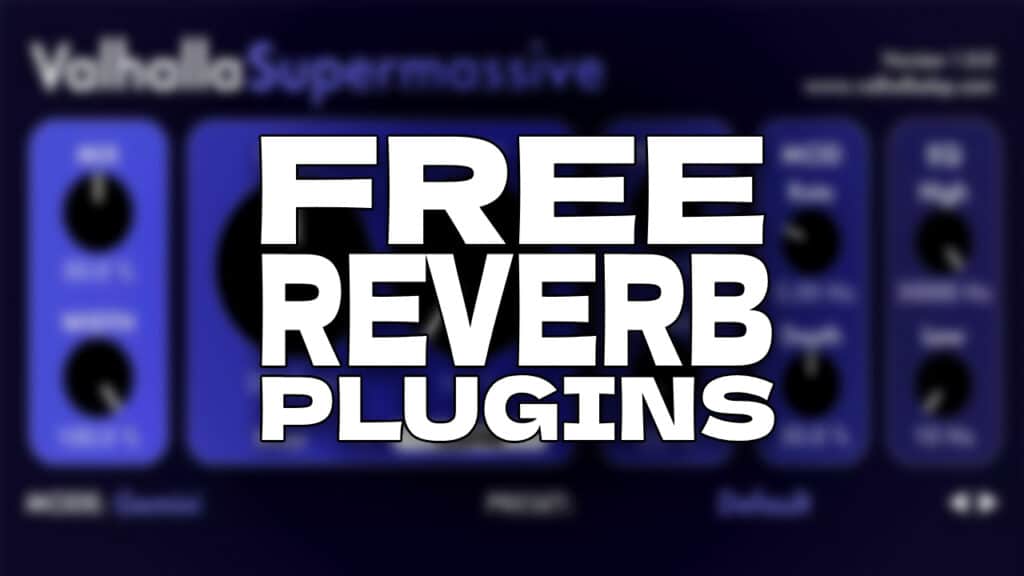WHAT IS SUB-BASS?
Sub-bass is a frequency range generally considered to be around 80Hz and below. It is the part of the spectrum that produces a distinctly physical effect that can be actually felt by the listener. Proper use of sub-bass can add weight and thickness to a track that might otherwise sound thin and weak. But too much sub-bass can overwhelm a track or quickly eat up headroom. Mixing sub-bass is challenging as it requires a playback system that can accurately produce those low frequencies. The use of a subwoofer might be needed for reference monitors not capable of extremely low-frequency response.
In terms of acoustics, sub-bass mixing requires a room that is properly treated to avoid standing waves that affect accurate monitoring of low end, which is a typical problem in home project studios. The mix engineer or producer needs to have confidence that what they hear at the listening position is not being overly influenced by the room, so intelligent mixing decisions that translate well to other playback scenarios can be made. When acoustic treatment is not optimal, corrective equalization applications such as Sonarworks SoundID Reference might be used to compensate for obtrusive resonances. Applications like these can also compensate for the idiosyncratic nuances of particular headphones.
There are also modeling headphone options like Steven Slate’s VSX Headphones that emulate actual professional studio spaces as well as other scenarios like car sound systems.
The Fletcher-Munson Equal Loudness Contours must also be considered when trying to monitor extreme low end. These contours describe how we perceive low frequencies compared to other parts of the spectrum. Low frequencies can disappear at low volumes causing a mix engineer to overcompensate and crank up those frequencies resulting in way too much bass when playback levels are increased. In contrast, when monitoring at high levels, there might be a tendency to attenuate the bass, resulting in weak low end when the mix is played back at lower levels. Finding a happy middle-ground mixing level, somewhere between 70 and 80 dBSPL, is a good starting place.
HOW AND WHERE TO USE SUB-BASS
While typical uses of sub-bass can be found in genre-specific like EDM, Acid, Techno, Hip hop, and myriad sub-genres and sub-sub-genres, it can also be used to add weight to a string section by doubling the contrabass with a simple sine wave.
Below is an orchestral excerpt (A) without and (B) with sub-bass.
Many synths have a subtone or sub-bass control that adds a pure sine wave an octave below the note being played. This can add weight and power to a lead line or pad.
RetroSynth (A) without and (B) with sub-bass
Serum (A) without and (B) with sub-bass
Thorn (A) without and (B) with sub-bass
While it is common to hear sub-bass on electronic kicks, acoustic kicks can also benefit from the use of sub-bass, adding thickness and warmth. Here is an acoustic kick sample (A) without and (B) with Logic Pro’s SubBass plugin engaged:
While sine waves produce the purest sort of sub-bass, other waveforms like sawtooth and square waves add upper harmonics that can give the impression of a low frequency by producing a harmonic spectrum. This relates to the psychoacoustic phenomenon known as the missing fundamental. Applications of this concept are used to produce the illusion of a low frequency where none is actually being produced due to the limitations of the playback system such as a phone or less-than-perfect sound system. The presence of a mathematically precise harmonic series causes the listener to perceive the related fundamental frequency and sort of fill in the blank.
Harmonic distortion also contributes to reinforcing the perception of low end by overdriving and flattening the waveform creating harmonically-related frequencies. The prudent use of distortion on bass can also be effective in helping it to cut through the mix. Compare this Alchemy bass line (A) without and (B) with Logic Pro’s ChromaGlow engaged.
A Reese Bass sound (named after Detroit icon Kevin Saunderson) uses detuned sawtooth waves. Below is an example from a nice collection of free Serum and Vital presets from Echo Sound Works:
Reese Bass example
No discussion of sub-bass would be complete without mention of the iconic 808. The TR-808 Drum machine was created by Ikutaro Kakehashi, the founder of Roland and released in 1980. “Using analog synthesis to create sound, the instrument could manipulate sound waves into bass lines and other electronic notes. Today, the 808 is a mainstay in hip-hop, electronic, and dance music.” (source). Originally a commercial failure, the 808 gained popularity partly due to its affordability and availability in the used market. Today, 808 libraries and emulations are omnipresent (see plugins below that use 808-style samples).
DOWN AND DIRTY DIY SUB-BASS PROCESSING
There are several sub-bass processing plugs as well as dedicated sub-bass synths that I’ll look at later in the article. But if you prefer to take a DIY approach, here is a step-by-step method that will help.
- Duplicate the track for which you want to enhance the sub-bass.
- Apply a highpass filter around 100-120Hz with a steep slope to the original track using a linear phase EQ to avoid phasing issues.
- On the duplicate track, apply a lowpass filter with a similar cut-off and slope.
- Now that you have the sub-frequencies isolated on the duplicate track, you can process the low end with compression, distortion, and other FX, and/or side chain the kick to prevent low-frequency clashes.
While this simple process can be effective, sometimes it pays to use the right tool designed for a specific purpose and there are several software choices regarding sub-bass worth exploring. Read on…
DEDICATED SUB-BASS ENHANCING PLUGINS
Bass XXL by Denise Audio
This bass-enhancing plugin uses the psychoacoustic phenomenon known as the missing fundamental mentioned earlier to create the perception of increased low end even on small speakers not capable of frequencies that low. The plugin uses the input signal to derive harmonics above the detected fundamental. The interface is clean and self-explanatory thanks to convenient pop-up help messages. The solo button allows you isolate the harmonics from the input signal, which can useful for independent processing. The root can be set manually by frequency or note name, or can follow incoming MIDI notes in real-time. Check out examples and tutorials on their product page.
Submarine by Waves
This device effectively generates subtones 1 and 2 octaves below the input signal. The interface reflects the aesthetic implied by the name and is as simple as it gets. Users can quickly dial-in sub-bass content for any input in seconds or explore a nice collection of instrument-specific presets.
LoAir by Waves
This is another simple device from Waves that can be used to generate subharmonic content for sound design, post-production or music. It works great for synths, kicks, and bass, or for restoring low-end in field recordings.
Here’s a video that illustrates using LoAir to add sub-bass and rumble to cinematic booms.
bx_subsynth by Brainworx
Inspired by the dbx 120XP, this beauty by Brainworx expands the functionality of the original hardware adding a third frequency range control, level trim controls, mono maker control, and internal mid-side processing.
“Continuous knob, 0db to +20.0dB. Each band’s Level Trim screw boosts the input signal in the synthesis sidechain only for the corresponding band. This can help to generate subharmonics if the original signal in this band is rather low compared to the other bands.” (manual)
The Solo and Trim controls are particularly useful for isolating and adjusting individual frequency ranges, and the Edge controls allow you to dial in the perfect amount of grit and punch.
Bass-Mint by Unfiltered Audio
This is a great device that has five modes including saturate, resonate, octave, synthesize, and overfold allowing the user to dial in various sub-bass flavors. Other useful parameters include Clarity (to remove mud in the 400Hz range), Anti-Rumble (to filter out components below 30Hz), and Soft Clip (which uses a saturator at the end of the signal chain to prevent hard clipping). Also, it’s quite fun to toy with the dice icon to generate random and surprising results for a more experimental approach.
MBassador by Zelda Production
This device includes a Bass Enhancer section that resynthesizes the incoming signal in a way that produces higher harmonics to take advantage of the missing fundamental concept mentioned earlier. There are also two sub-bass generators that produce tones 1 and 2 octaves below the input signal. Each section has separate level, tone, and saturation controls. I particularly like the metering visibility, mid-side processing functionality, and interpolation choices available in the Settings menu. It also has a robust modulation section with four multi-function modulation sources. This device seems deceptively simple until you start exploring the vast resources beneath the surface. This is a highly tweakable and effective plugin!
Lowender by reFUSE Software
Lowender allows you to select three different frequency ranges for subharmonic synthesis: Classic, Guitar, and Bass. This allows the plugin to target the lowest octaves of the instrument. It’s a relatively straight-ahead device with drive and gate settings, and lowpass filter. There are just 8 simple presets based on the type of input signal but you can get amazing results almost immediately.
Thump by Metric Halo
This FREE plug from Metro Halo is billed as a subharmonic synthesizer, although it is instantiated as an Audio insert. It uses an amplitude follower to drive two independent oscillators that can reinforce drum sounds and bass lines. I found it most useful for static lines and kicks, rather than melodic content.
DEDICATED SUB-BASS INSTRUMENTS
Below are some synths that are designed specifically for rich sub-bass lines.
SubBoomBass II by Rob Papen
This is a full-blown synth with two oscillators, two filters, an onboard 16-step sequencer, modulators, a programmable XY pad, and a robust suite of effects. In addition to traditional wave shapes and sampled waveforms, sources can be set to use a physical string model based on the Karplus-Strong algorithm or granular processing. Filter sections boast an impressive 31 filter types. This beast is certainly capable of sounds well beyond sub-bass with an overwhelming array of possibilities and presets to start with.
SubCraft by UJAM
This instrument sounds great right out of the box with 808-style kicks and bass lines! The collection of hexagonal icons in the center of the interface works like an XY pad and is referred to as the terrain. You can randomize the position or adjust it in real-time. It offers controls from soft to rough to noisy and all things in between. “This creative control navigates through endless combinations of subtones and overtones, all pre-processed and phase-aligned to ensure that you find the best possible bass tone that sits perfectly in your mix.”
A kick sample starts the process after which your MIDI input will generate pitched sub-bass content with controls for length, release, tone, glide, and level. This thing kicks sub-ass!
SubLab by Future Audio Workshop
This sample-based plugin uses what the developer refers to as X-Sub™ technology, which they claim is more accurate than other psychoacoustic-based enhancers. The independent control over sub-bass, main bass, and harmonic frequencies is powerful. It comes with onboard, distortion, compression, and filter sections, and 250 samples from modular and classic drum machines. You can get stunning results fast!
SubLab XL by Future Audio Workshop
This is an enhanced version of SubLab that includes additional FX: Noise, Bitccrusher, Tape Saturation, Waveshaper, and more Distortion choices. FX routings can also be altered in the XL version. A modulation section has been added and an awesome 3D interface! Super good!
Here is a demo of how to create Kendrick Lamar’s “N95” bass with SubLab XL.
Subdivine by Diginoiz
This is a sample-based 808-style instrument that includes an array of 50 analog and 50 digital samples. The interface is simple and direct with controls for the amplitude envelope, drive settings, and glide. The sub-bass is baked into the samples but you can generate color variations with pre, post, and type controls for the drive section.
Monoment Bass by Softube
Monoment uses two source samples from a robust onboard collection of sampled hardware that can be detuned, modulated, processed, and filtered. A unique Aging control can add drift, noise, and grit. Add analog distortion, ambience, and tone-shaping to create a surprising variety of color and texture. Designed specifically with EDM, D&B, and House genres in mind. It also works seamlessly in Softube’s Modular (https://www.softube.com/products/modular) environment.
Substance by Output
I’ve long been a fan of Output devices due to their pristine sound, programmability, and stunning aesthetics, and Substance is no exception. This Kontakt-based instrument comes loaded with 300 presets, several of which are categorized as sub-bass sounds. It’s super easy to create variations using the main Shape, Attack, Filter, and Dirt sliders. The three-section source interface in the center allows access to categorized sample sources like subs, organic hybrids, one-shots and impacts, and more, making the possibilities limitless. Another brilliant instrument from one of my favorite developers.
CONCLUSIONS
The list above is by no means exhaustive. Other plugs worth checking out include:
RootOne by Leapwing
MBassador by MeldaProduction
Lowender by reFUSE Software
Bass Engine 2 by DopeSONIX
The Sub by Iceberg Audio
SubGen by SSL
So how low can you get? Pretty damn low! Try some of the plugins mentioned above to create earth-shattering, chest-thumping, ferocious low-end. But before you sign off on a mix, be sure your monitoring situation is giving you an accurate picture of what’s going on down there. That means a properly treated space and/or corrective EQ software that eliminates room effects caused by standing waves and obtrusive resonances. If you find your mix is sounding weak or thin, consider using a bass-enhancing plugin or dedicated sub-bass synth to add warmth and thicken your production.
EXTRAS
Want to win a free license to Kontakt 8? Be one of the first 1000 people to FOLLOW WAVEINFORMER ON INSTAGRAM to be automatically entered to win one of three full-version Kontakt 7 licenses! Read more.
Assess your knowledge of essential audio concepts using our growing catalog of online Quizzes.
Explore more content available to Subscribers, Academic, and Pro Members on the Member Resources page.
Not a Member yet? Check the Member Benefits page for details. There are FREE, paid, and educational options.


